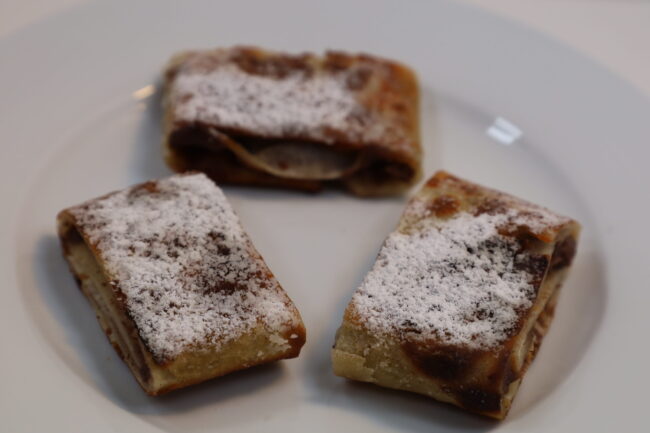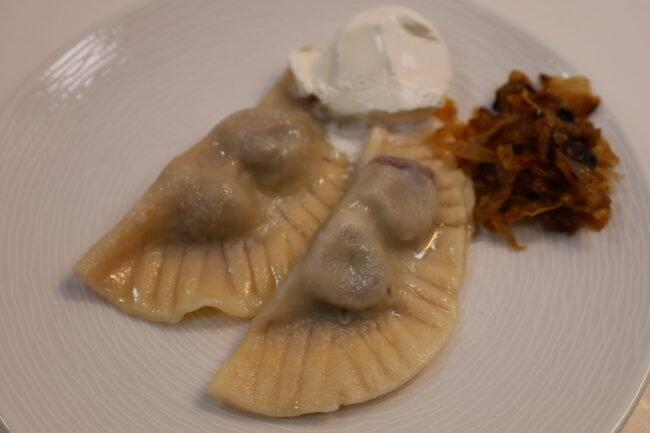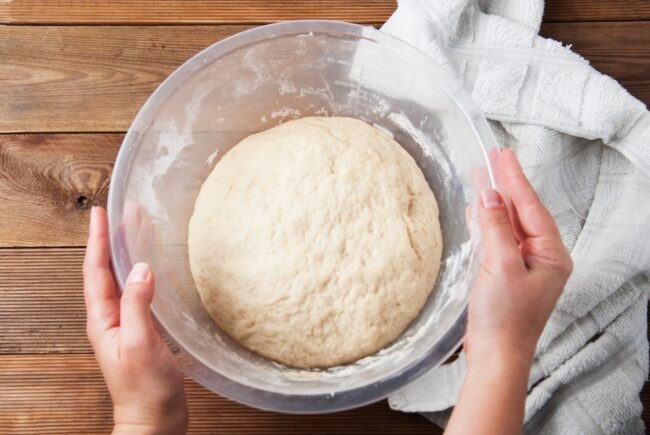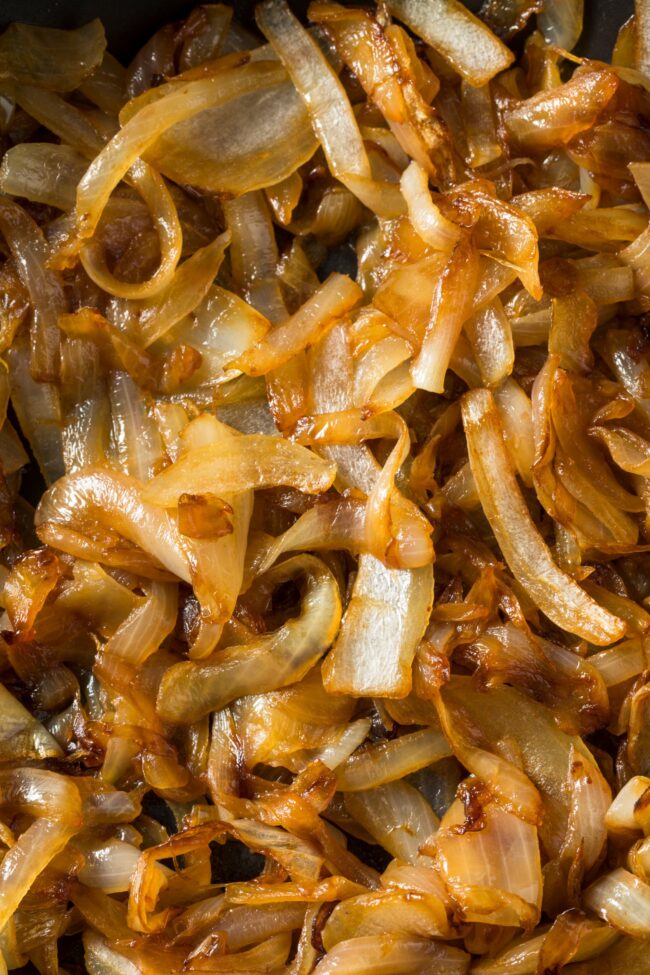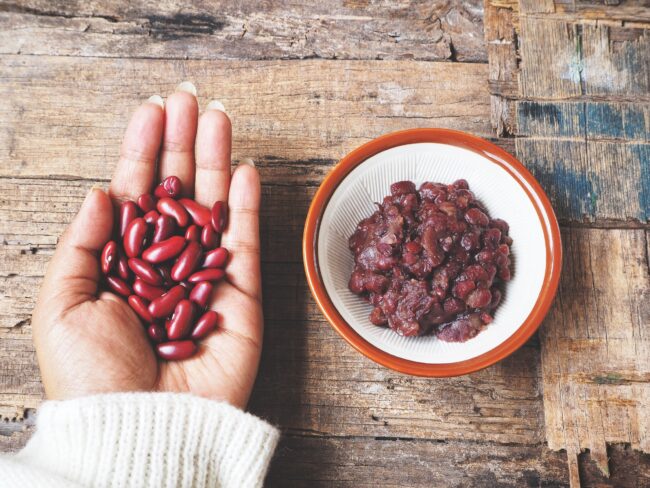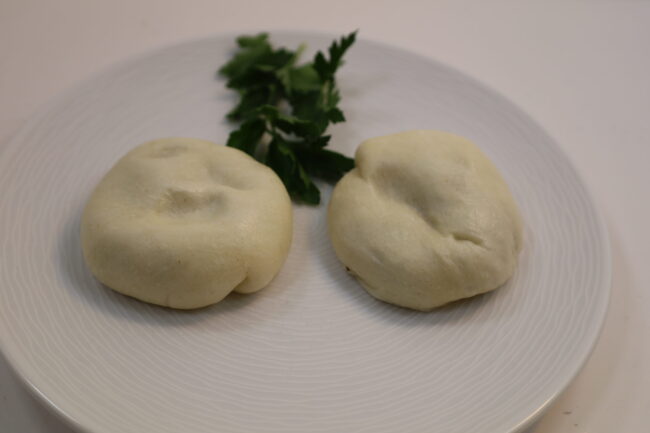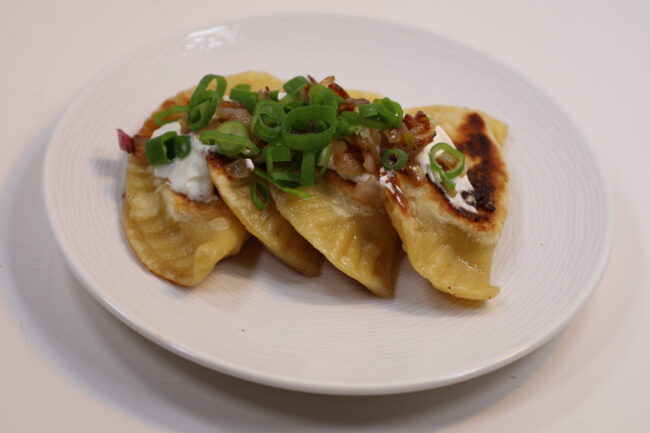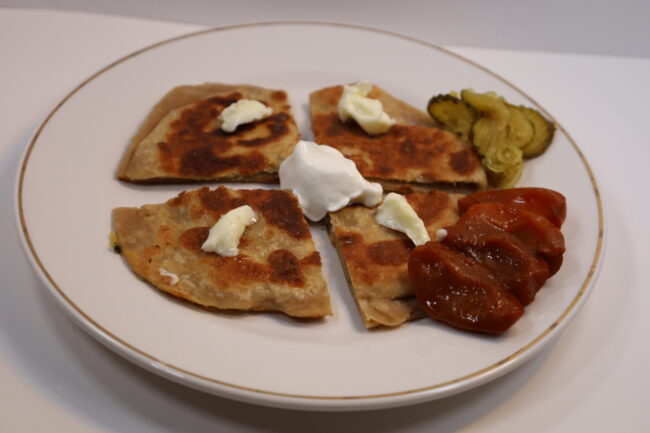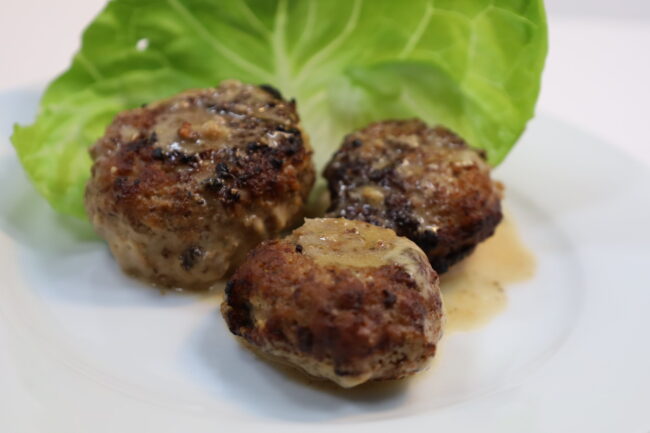John Peppin is a physician with over 30 years of clinical experience. John has published over 90 articles and books in the medical field. He has also been a home cook for most of his adult life, taking a great interest in a variety of cuisines and cooking techniques. He is a voracious cookbook reader with an intense curiosity about cuisines around the world. Wrapping and the stuffing of foods has become an overwhelming focus for John, and he has researched recipes from around the world. A self-taught home cook who loves new ways of cooking. Food, good wine and friends, la dolce vita!
These are delicious pancakes and easy to make. They can be served as part of a dim sum lunch or as sweet dish after or during dinner. These are a variation, if you will, on the classic Chinese scallion pancake. First you make the pancake dough, these can be used for the scallion version so…
Vareniki are the Ukranian and Russian version of pierogi. Pierogi are the Polish dumplings that classically are stuffed with potatoes. Vareniki can also be stuffed with the potato and cheese mixture, however as with pierogi, they can be stuffed with meat, fish, other vegetables and cherries. Cherry vareniki are a wonderful dish that can be…
Sour cream is an acidic fat and a fermented product. Cream is fermented with lactic acid producing bacteria. This results is the tangy taste of sour cream and also thickens the final product. The acidic nature of the sour cream breaks down and tenderizes long protein molecules of flour proteins.Adding this to a dough increases…
Onions contain sugars and the slow long cooking process brings them to the forefront. This is the caramelizing process. Cooking slowly will cause a material to change both in color, becoming browned, and flavor, as the sugar oxidizes. This process is called pyrolysis. Caramelization occurs with ingredients such as onions, meat, vegetables, even fruit. Eastern…
Red bean paste is a wonderful ingredient that is used in a number of different types of buns throughout the Far East. In Korea it is used in porridge or shaved ice, in Japan and China the paste is incorporated into delicious buns, as in Dou Sha Bao (https://wrapitupfood.com/dou-sha-bao/).
The Adzuki bean has a long history. Originally domesticated in china approximately 3000 BC. They are called “anko” in Japan and probably arrived in Japan from China in the 1600s. The original filling was made out of meat and vegetables, however to fulfil Buddhist vegetarian requirements the red beans made in a paste was used.Adzuki…
Nice is the capital of the French Reviera, a beautiful and wonderful city on the Mediterranean Ocean. The area was first inhabited by early man about 400,000 years ago. They dwelt in the caves in the hills and nountains surrounding the area where the city was to develop. This city has a long history, first…
Perhaps one of the most recognized wrapped dumpling in the Western world, apart from Chinese and Japanese dumplings, is the Pierogi. Pierogi is plural meaning multiple dumplings. One pierog is singular. So many of the dumplings around the world are made from unleavened dough, formed into a half moon and either boiled, fried or baked,…
Aloo paratha is a dish originating in the Punjab region of India. Frequently served for breakfast. The name, derives from aloo, meaning potato, parat, meaning layers, and atta, meaning flour. This dish can be found in other regions of India and in Pakistan. It has spread in popularity from Punjab and India, to Malaysia, Singapore…
The term “rissoles” derives from the French verb “rissole” which means to brown. The term has gone through extensive changes from when Auguste Escoffier used the term to describe Hors d’oeuvers or starters that were made with a brioche pastry and stuffed with a beef filling that are usually fried. The Rissole is basically a…


